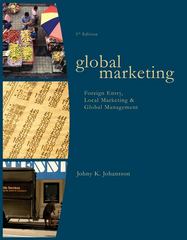Question
In 2008, the New York Times Media Group earned revenues of $668 million from circulation, $1.077 billion from advertising, and $181 million from other sources.
In 2008, the New York Times Media Group earned revenues of $668 million from circulation, $1.077 billion from advertising, and $181 million from other sources. The Group decided to raise circulation prices and trim less profitable readership. In May 2009, theNew York Timesplanned to raise its weekday cover price from $1.50 to $2. The previous year, theTimeshad raised the price from $1.25 to $1.50, and circulation fell 3.6% to 1.04 million.
(a)
Using the 2008 price and circulation information, calculate the own-price elasticity of demand for theNew York Timesweekday edition.
(b)
At the current price of $1.50, and assuming 300 weekdays a year, what is the annual revenue from weekday sales?
(c)
Consider the expected 2009 price increase from $1.50 to $2. What is the percentage change in price?
(d)
Suppose that the expected 2009 price increase from $1.50 to $2 does indeed yield $40 million in incremental revenue. What is the percentage change in revenue?
(e)
Calculate the price elasticity of demand which would imply the $40 million increase in revenue. (Hint: Useequation Proportionate change in expenditure = Proportionate change in price * (1 + Own - price elasticity demand).)
(f)
Compare the elasticities in (a) and (e). Does the difference make intuitive sense?
Step by Step Solution
There are 3 Steps involved in it
Step: 1

Get Instant Access to Expert-Tailored Solutions
See step-by-step solutions with expert insights and AI powered tools for academic success
Step: 2

Step: 3

Ace Your Homework with AI
Get the answers you need in no time with our AI-driven, step-by-step assistance
Get Started


